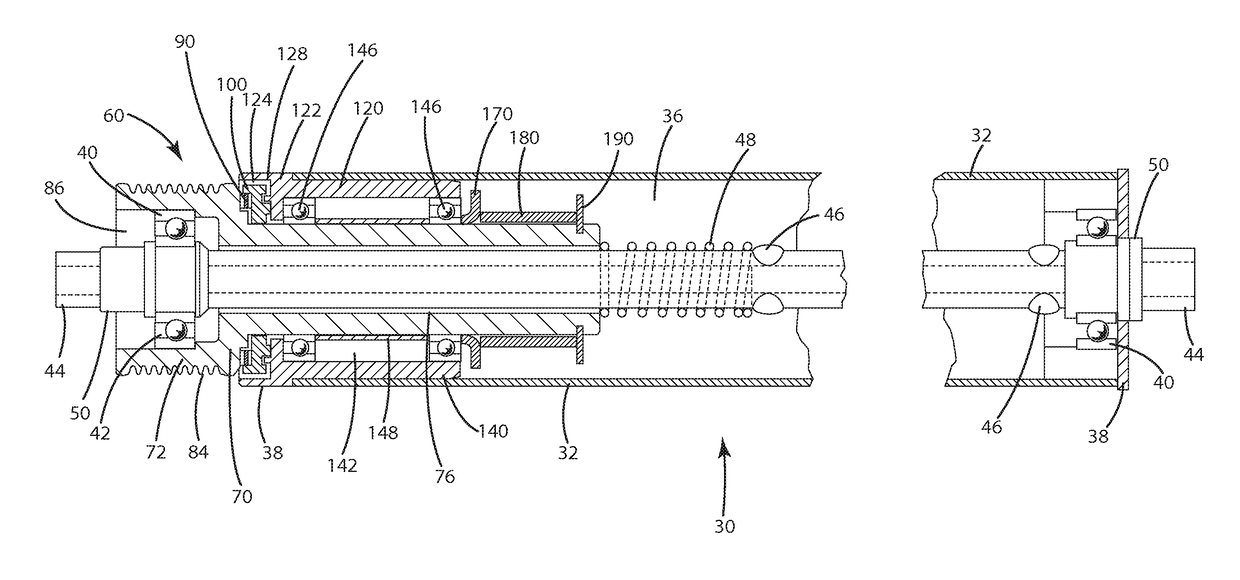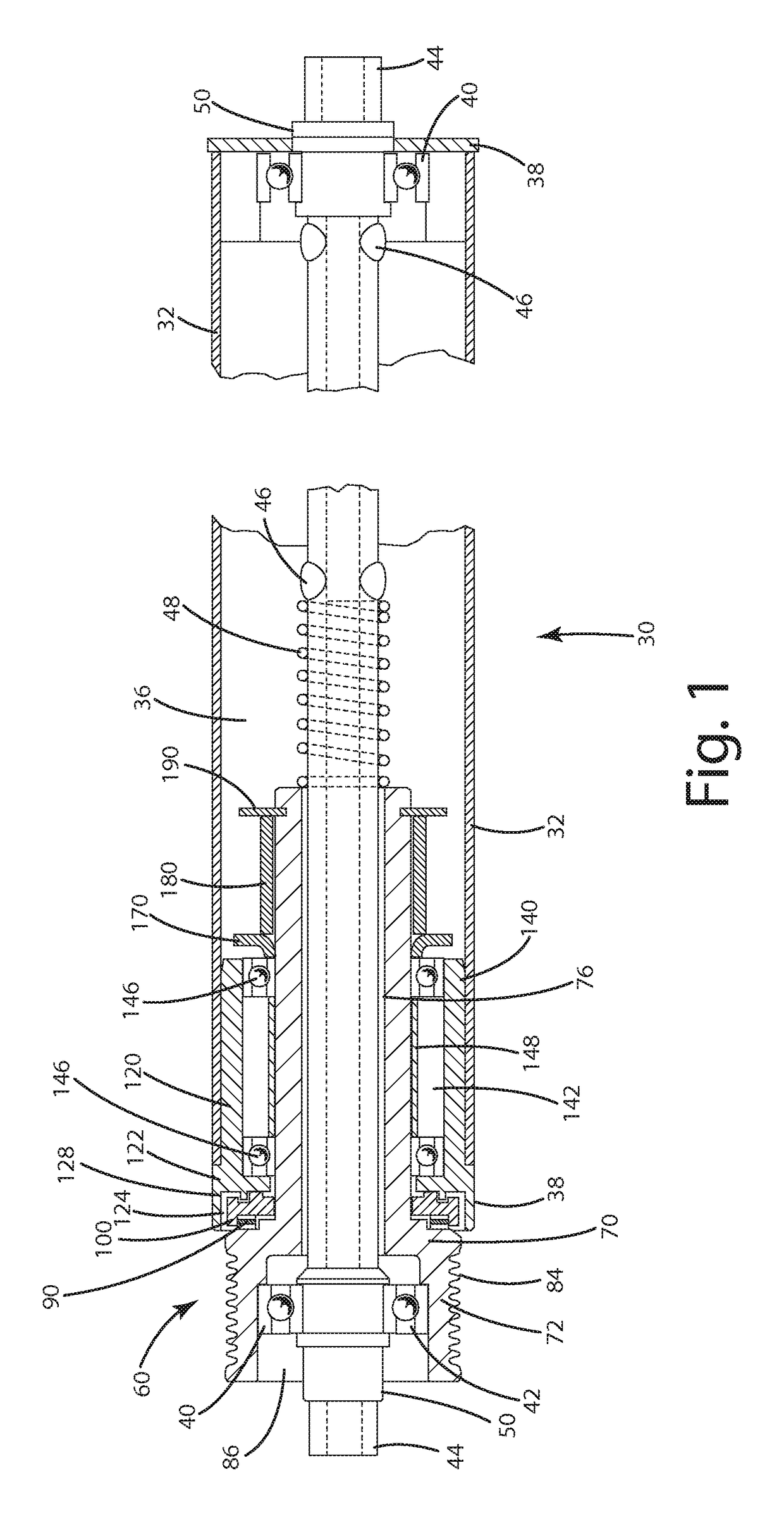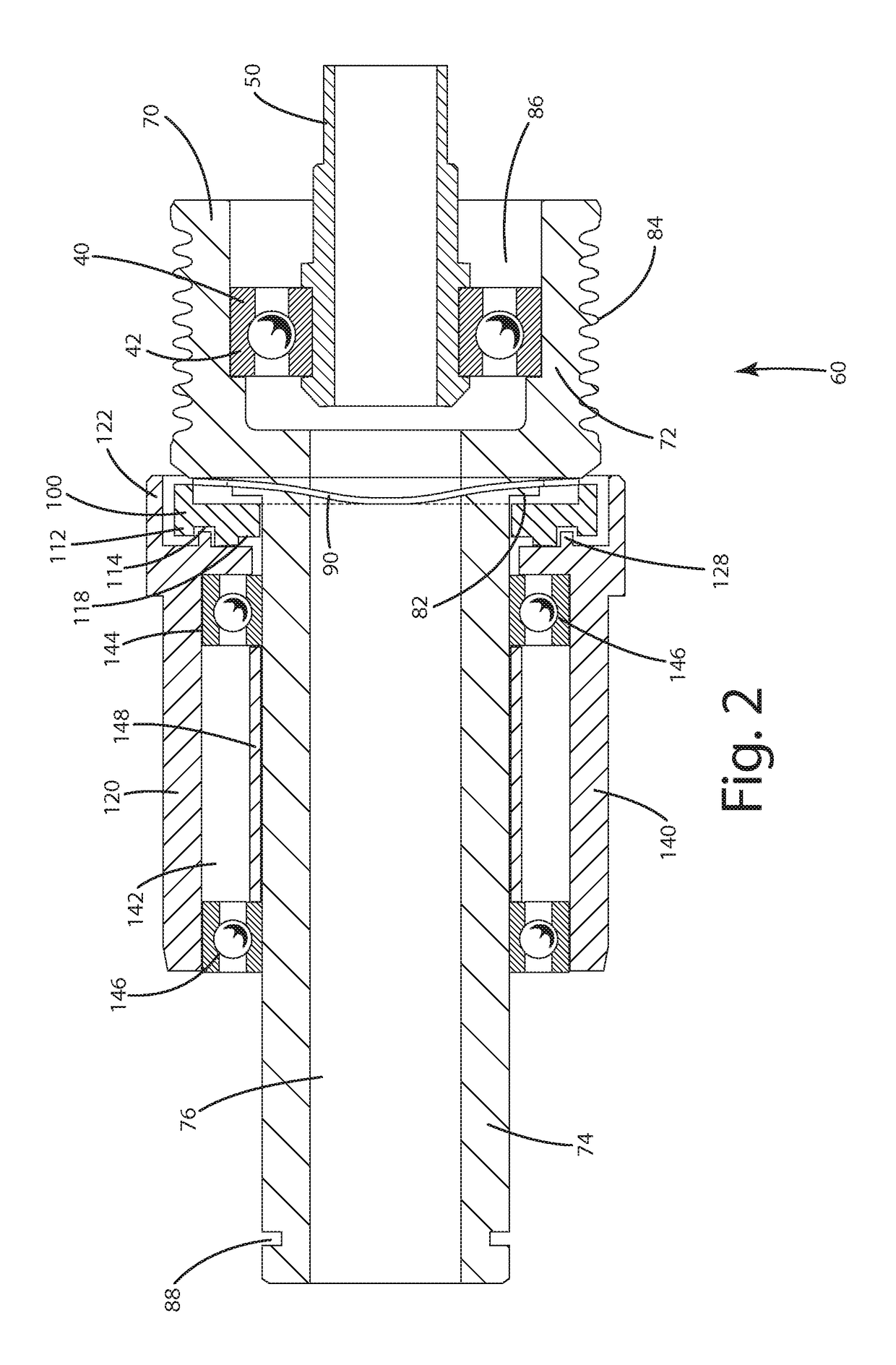Conveyor roller with integral clutch
a conveyor and roller technology, applied in the direction of roller-ways, transportation and packaging, etc., can solve the problems of difficult operation, difficult operation, and high cost of traditional accumulator lines that use a single start and stop mechanism, and achieve the effect of convenient and efficient operation, cost-effective, reliable, and convenient and efficient operation
- Summary
- Abstract
- Description
- Claims
- Application Information
AI Technical Summary
Benefits of technology
Problems solved by technology
Method used
Image
Examples
Embodiment Construction
[0031]As illustrated in FIGS. 10 and 11, the present invention generally includes a roller bed conveyor system 10, typically for use with an accumulator conveyor. The conveyor system 10 of the present invention may be made in practically any desired configuration by combining straight segments, curved segments, intersections, ramped sections, and any other desirable segments in a variety of configurations with a variety of operational components, such as sorters, accumulators, transfers and / or diverters, as desired by the needs of the user. Accumulator conveyors are particularly useful when individual runs having a single product feed onto a main run in controlled fashion to allow automated sorting of a variety of products into a single order or destination. Each run may be made up of one or more desired segments. A single order may include a number of items going to the same destination, or same route or same truck, wherein the items may differ. For example, an order having forty t...
PUM
 Login to View More
Login to View More Abstract
Description
Claims
Application Information
 Login to View More
Login to View More - R&D
- Intellectual Property
- Life Sciences
- Materials
- Tech Scout
- Unparalleled Data Quality
- Higher Quality Content
- 60% Fewer Hallucinations
Browse by: Latest US Patents, China's latest patents, Technical Efficacy Thesaurus, Application Domain, Technology Topic, Popular Technical Reports.
© 2025 PatSnap. All rights reserved.Legal|Privacy policy|Modern Slavery Act Transparency Statement|Sitemap|About US| Contact US: help@patsnap.com



